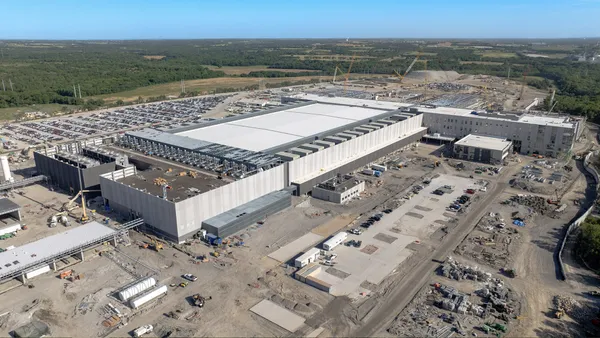Dive Brief:
- Construction spending edged up in September, increasing 0.3% from August to $1.219 trillion, according to the Commerce Department. Spending is up 2% year-over-year.
- Although nonresidential construction declined 2.9% compared to one year ago, the segment was up 0.5% month-over-month. The private nonresidential segment dipped 0.8% during the period, falling 3.8% from September 2016, while public nonresidential ticked up 2.5% for the month, registering a 1.6% year-over-year loss.
- Residential construction remained virtually the same during the period amounting to $515.4 billion in September, compared to August's downward-revised estimate of $515.6 billion.
Dive Insight:
Despite the overall increase in construction spending, the figure has seen steady declines for much of the past year. A change in course could be in store as much of the southern and western U.S. begin to rebuild following a spate of natural disasters, though the extent of those efforts and their impact on spending overall is still to be determined.
Ongoing struggles with maintaining the industry's labor force also will continue to impact those numbers. As veteran workers retire and companies struggle to find their replacements, and as companies wade through the slow onboarding and training processes of hiring on younger workers, those companies could see their profit margins dip, according to Associated Builders and Contractors Chief Economist Anirban Basu.
Several localities are trying to address their labor shortages by investing in better training opportunities, including the state of Michigan; the Northeast Regional Council of Carpenters in Salina, NY; and the New England Regional Council of Carpenters in Manchester, NH.
But many still aren't taking action to address the labor shortage. A recent study by FMI found most engineering and construction firms don't invest in workforce development.
Associated General Contractors of America officials believe that the decline in public sector investments, even despite robust economic growth, means maintenance and improvements will lag as roads, bridges and other public works systems see increased use. As part of any new tax reform measure, association officials have appealed to Congress and the Trump administration to include funding for roads, bridges, clean water and other infrastructure projects.
Last year during his campaign, then President-elect Trump proposed a $1 trillion infrastructure bill, but he has remained largely mum about the topic since telling lawmakers in late September he didn't think private financing of public infrastructure would work.













